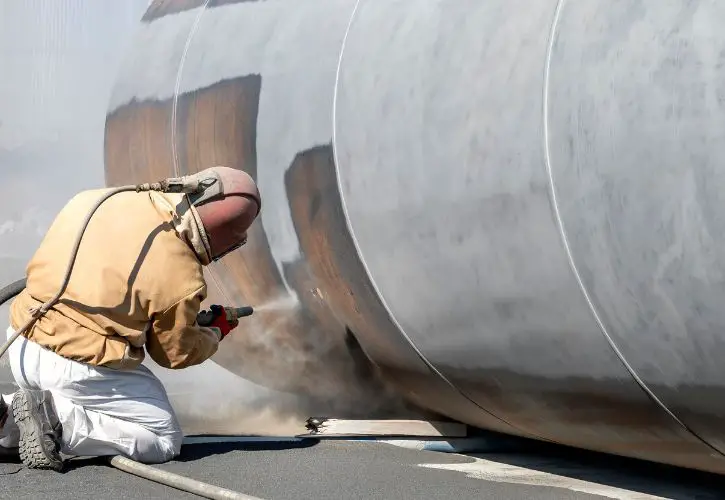Table of Contents
Most of the time, a cleaning or painting project needs just a rag, some soapy water, and a little elbow grease to prepare the surface. Other times, you need something with a little more oomph. Sandblasting is a great way to tackle a job requiring the removal of old paint, ground-in dirt, stains, grease, and more. Sandblasting accomplishes this by buffeting the surface with sand, glass beads, or other materials. You can strip a surface in no time, leaving a clean and smooth finish. But before you turn on your machine, consider the following four tips and tricks for using a sandblaster.
Protect Yourself
Sandblasting’s effectiveness also makes it dangerous to your health. You’re dealing with the blasting and spreading of abrasive materials. That means thousands of particles are released onto a surface and into the surrounding air, which is bad news for exposed skin, eyes, mouths, and noses.
Wear protective goggles to keep the sand or other stuff from scratching your corneas. Wear outerwear and gloves to keep your skin safe from irritation. Finally, wear a mask to keep the particles from entering your lungs.
Get the Right Material
When you use sand in your sandblaster, you’re employing regular old playground sand, as well as other types. But other materials are even more effective for specific jobs. For example, baking soda is great for removing rust. Crushed glass grit works without polluting water and the local environment. Steel shot cleans metal surfaces very well. And corncob or walnut shell grit works on wood without scratching it.
Use a Bucket
Save yourself some aggravation when pouring your medium into the sandblaster tank—use a bucket. Trying to dump the contents of a bag into the tank leads only to a heartbreaking mess you’ll need to sweep up and reintroduce to the device. Instead, pour the blasting material into a bucket with a pouring spout or lip. This ensures the sand or whatever you’re using goes directly into the tank, saving time and money while avoiding a mess.
Keep It Tidy
Here’s the last of our four tips and tricks for using a sandblaster: use a blast cabinet. Naturally, a sandblaster’s power can blow smaller objects around, so you need a way to contain the force. A blast cabinet contains and restricts the surface and sandblasting to a smaller, enclosed area. It collects the medium as well, which you can then easily remove and reuse instead of sweeping it all up. If you don’t have a blast cabinet, consider the benefits of hiring a professional sandblasting service, one of which is a practically mess-free job.

